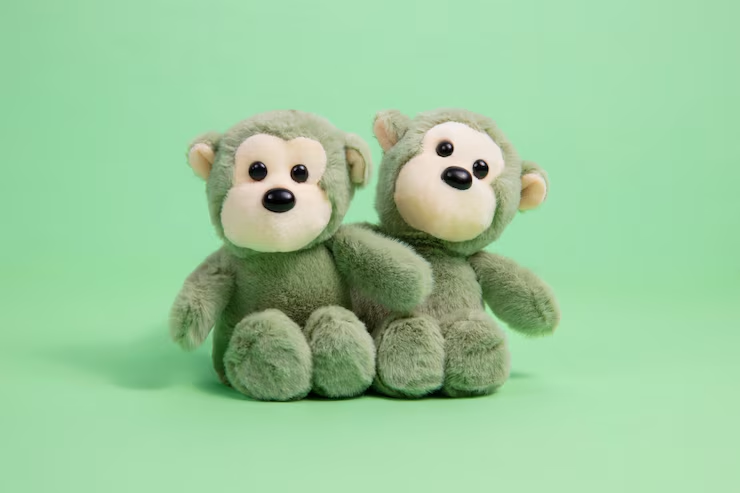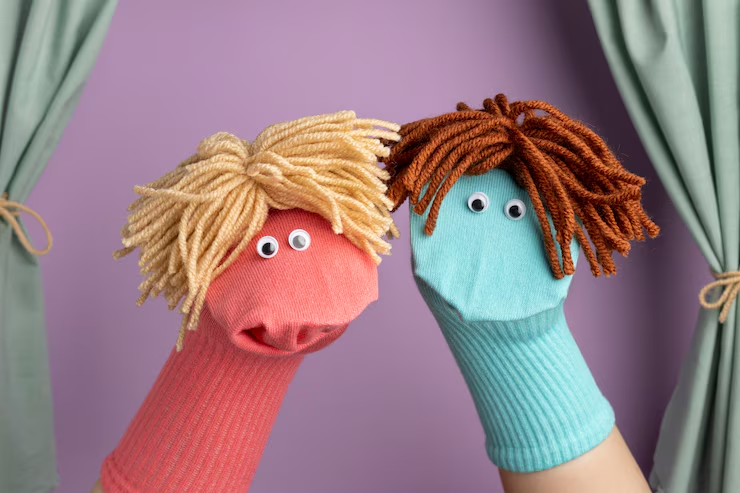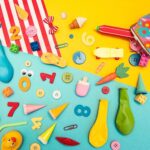Get Rid Of The Confusion Of Choosing Age-appropriate Toys
Choosing the most age-appropriate toys is essential to promoting your child’s growth, sparking joy and ensuring safety. From growing toys to the best toys for 4-month-olds, there are toys for both babies and toddlers that are perfect for their developmental stage. You may not know which to choose, but the answer is easy if you know or explore. Whether you’re a parent wondering, “Do newborns need toys?” or searching for toy names for your toddler, we’ve got expert insights and practical advice for you.
What Are Age-Appropriate Toys?
Age-appropriate toys are designed to match a child’s developmental abilities, interests, and safety needs at specific stages. These toys stimulate physical, cognitive, and emotional growth while ensuring safe play. For instance, a 4-month-old needs toys that encourage sensory exploration, while toddlers require toys that promote problem-solving.
Why Age-Appropriate Toys Matter
Toys tailored to a child’s age enhance learning and engagement. According to a 2023 study by the American Academy of Pediatrics, toys aligned with developmental milestones improve cognitive outcomes by up to 20% compared to mismatched toys. Selecting the right toy ensures your child is neither frustrated by overly complex toys nor bored by overly simplistic ones.

How to Choose an Age-Appropriate Toy
When selecting companion toys, consider these key factors:
- Safety First: Ensure toys meet safety standards (e.g., no small parts for infants).
- Developmental Fit: Match the toy to your child’s current skills and interests.
- Durability and Quality: Opt for toys to grow on that withstand rough play.
- Engagement Level: Choose toys that spark curiosity and creativity.
Product Spotlight: The Manhattan Toy Winkel Rattle & Teether is a top pick for 4-month-olds. Its soft, bendable loops are perfect for grasping and chewing, supporting sensory and motor development.
Age-Appropriate Toys for Toddlers
Toddlers (ages 1–3) thrive with toys that encourage exploration, creativity, and coordination. Here are some top suggestions:
- Stacking Blocks: Promote fine motor skills and problem-solving.
- Shape Sorters: Enhance cognitive development and hand-eye coordination.
- Push-and-Pull Toys: Support gross motor skills and balance.
Research Insight: A 2024 study from the Journal of Child Development found that toddlers engaging with shape sorters showed a 15% improvement in spatial reasoning skills.
Summary of Toddler Toy Suggestions
Focus on toys that are colorful, interactive, and safe. Brands like Melissa & Doug offer durable, engaging options like the Wooden Shape Sorter, ideal for toys to grow on through toddlerhood.
Child Development Toys by Age
Toys play a pivotal role in child development, with specific types suiting different age groups. Below, we break down the essentials.
What Are the Age Groups for Toys?
Toy manufacturers typically categorize toys by age groups:
- 0–6 months: Sensory toys (rattles, soft books).
- 6–12 months: Interactive toys (stacking cups, activity gyms).
- 1–3 years: Building and imaginative play toys (blocks, play kitchens).
- 3+ years: Complex toys (puzzles, role-play sets).
What Is the Toy Age in Child Development?
The “toy age” refers to the developmental stage a toy targets. For example, a 4-month-old benefits from toys that stimulate visual tracking and grasping, while a 1-year-old needs toys that encourage walking or language skills.
What Toys Are Good for Early Childhood Development?
Early childhood toys should foster sensory, motor, and cognitive growth. Examples include:
- Soft Rattles: For infants to explore sounds.
- Board Books: For language development.
- Building Blocks: For spatial and creative skills.
Developmental Toys for 1-Year-Olds
One-year-olds are curious and mobile, needing toys that match their energy. Top picks include:
- Activity Cubes: Encourage problem-solving and fine motor skills.
- Musical Instruments: Foster rhythm and auditory development.
- Push Walkers: Support walking and balance.
Product Spotlight: The VTech Sit-to-Stand Learning Walker is a versatile toy for 1-year-olds, combining music, lights, and walking support to keep little ones entertained and growing.
Infant Toys by Age
Infants develop rapidly, and their toy needs evolve monthly. Let’s explore the specifics.
What Should Be Baby’s First Toy?
A baby’s first toy should be simple, safe, and sensory-focused. High-contrast black-and-white toys or soft rattles are ideal for newborns, as they stimulate early visual and auditory development.
When Do Babies Start Playing with Toys?
Babies typically show interest in toys around 2–3 months, when they begin grasping and tracking objects. By 4 months, they actively engage with toys like rattles or activity gyms.
Should a 2-Month-Old Be Playing with Toys?
At 2 months, babies are just starting to notice toys. Offer lightweight, high-contrast items like the Sassy Developmental Bumpy Ball, which encourages visual tracking and gentle grasping.
Should a 3-Month-Old Be Interested in Toys?
Yes, 3-month-olds are often fascinated by toys that crinkle, rattle, or feature bold patterns. Soft toys with varied textures help stimulate their senses.
Different Types of Toys for Babies
Baby toys fall into several categories:
- Sensory Toys: Rattles, teething rings.
- Motor Skill Toys: Grasping rings, activity mats.
- Cognitive Toys: Soft books, mirrors.
When Do Babies Start Playing with Toys Instead of Eating Them?
Around 6–8 months, babies begin using toys for play rather than mouthing them exclusively, as their curiosity shifts toward exploration and manipulation.
Toys for 4-Month-Old Development
Toys for 4-month-olds are critical for sensory and motor growth. At this age, babies love toys they can grab, shake, or stare at. Top recommendations include:
- Rattles: For auditory and grasping skills.
- Activity Gyms: For visual and motor development.
- Teethers: For soothing gums and sensory exploration.
Best Toys for 4-Month-Olds:
- Fisher-Price Deluxe Kick & Play Piano Gym: This activity gym features lights, music, and dangling toys, keeping your 4-month-old entertained while promoting tummy time and motor skills.
- Oball Shaker: Easy to grasp and shake, this toy supports hand-eye coordination.
What Toys Should I Play with to Keep My 4-Month-Old Entertained?
Engage your 4-month-old with interactive play. Wave a rattle to encourage visual tracking or place them under an activity gym to stimulate reaching and kicking. Alternate toys to maintain interest.
Explore Baby Toys And Take Every Step To Help Your Child Play Correctly
You may already have a general idea of the basics and selection guidelines for age-appropriate toys. It is also essential to delve into other topics, and we will explain the following to enrich your understanding:
Different Types of Toys for Babies
- Sensory: High-contrast mobiles or textured toys.
- Motor Skill: Stacking rings or soft balls.
- Cognitive: Cloth books or activity boards.
- Social-Emotional: Plush toys for comfort.
When Do Babies Start Playing with Toys Instead of Eating Them?
Around 6-8 months, as hand-eye coordination improves and they grasp object permanence.
Should a 3-Month-Old Be Interested in Toys?
Yes, they’ll notice high-contrast or noisy items, aiding sensory growth.
Should a 2-Month-Old Be Playing with Toys?
Not actively, but they benefit from observing toys like mobiles—do newborns need toys? Yes, for stimulation!
Toys for 4-Month-Old Development
Focus on toys that encourage reaching and grasping, like crinkly toys.
Toys to Entertain a 4-Month-Old
Try the Lamaze Freddie the Firefly, with its vibrant colors, sounds, and teething ring.
Below is a concise table outlining age-appropriate toys for children aged 2-8 months, focusing on developmental stages and toy recommendations. The data is drawn from expert insights and aligns with the developmental needs of infants, emphasizing safety and engagement.
| Age Range | Developmental Stage | Toy Types | Toy Recommendations |
|---|---|---|---|
| 2-3 Months | Observing surroundings, blurry vision, beginning to track faces and sounds | High-contrast mobiles, soft rattles, unbreakable mirrors | Fisher-Price Deluxe Kick & Play Piano Gym (sensory stimulation with lights and music) |
| 4-6 Months | Grasping, reaching, rolling, exploring with mouth, starting to sit | Textured balls, teething toys, activity gyms with dangling toys | Itzy Ritzy Mushroom Pal Teether (safe for mouthing, tactile exploration) |
| 6-8 Months | Sitting, crawling, understanding object permanence, transferring objects | Stacking cups, soft blocks, toys with buttons or sounds | VTech Sit-to-Stand Learning Walker (encourages crawling and standing) |
Notes:
- Ensure toys are large enough to avoid choking hazards and made of non-toxic materials.
- Toys should stimulate senses (sight, sound, touch) and support emerging motor skills.
Toys to Grow On
“Toys to grow on” adapt to a child’s evolving needs. A wooden block set starts as a stacking toy for toddlers and later becomes a tool for complex creations. Similarly, a musical set introduces rhythm early and supports advanced play as skills develop.
Backed by Evidence
Research underscores the value of age-appropriate toys. A Journal of Child Development study highlights how such toys boost cognitive and motor skills. Experts advocate for playthings that blend fun with learning, ensuring children thrive through play.
Needs And Interests – Toys For Different Ages
Choose the most appropriate toys for your child, based on their age and development stage, from their first rattle to their toddler years. The key to choosing age-appropriate toys is to understand your child’s developmental needs and choose companion toys that inspire joy and growth. From newborns who prefer simple sensory toys to 1-year-olds who love activity blocks, the right toys are essential. For 4-month-olds, prioritize toys like activity gyms and rattles to support their early growth milestones.
Always check safety labels, choose toys that are durable so your child can continue to play with them as they grow up, and change toys regularly to keep playtime fresh. Lay the foundation for lifelong learning and fun for your child. With the right choice and interest, happiness is easy to obtain. It’s not just your child’s participation, your participation is also an important source of fun and promotes relationship development.


